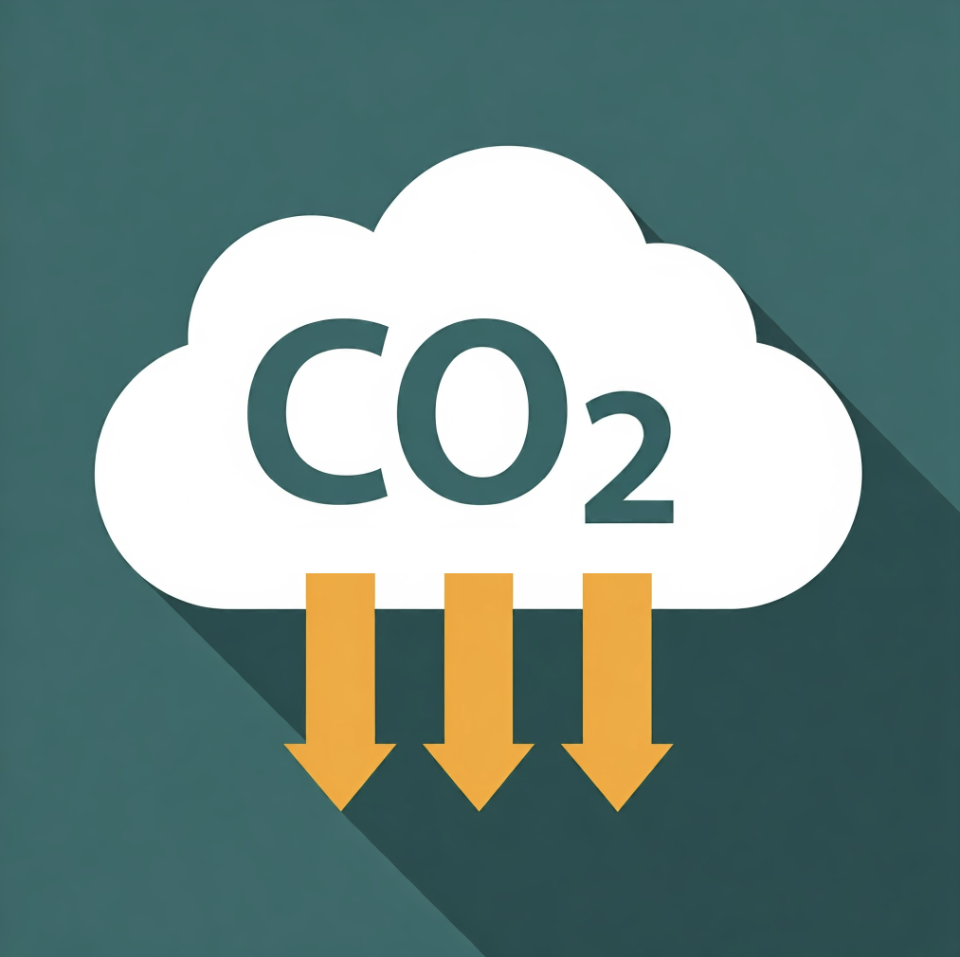Climate change is having a particularly severe impact in Italy.
Rising temperatures are causing increasingly hotter summers, with more frequent and intense heat waves and an energy system stressed by consumption peaks of air conditioning systems. Drought and water scarcity are reducing water reserves in many regions, with a heavy impact on agricultural production and biodiversity. Extreme weather events such as cloudbursts, floods and landslides are becoming more frequent and devastating.
Italy has committed to achieving climate neutrality by 2050, in line with the European Green Deal. For years, strategies and investments in Europe and Italy have been focused on reducing emissions through investments in energy efficiency, renewable energy sources and limiting emissions in the most energy-intensive sectors, also supported by the European carbon emissions management mechanism (ETS Emissions Trading System).
The increased concentration of carbon and greenhouse gases in the atmosphere is the main cause of climate change and we have known for a long time that reducing these emissions is essential.
Carbon removal / sequestration
However, there is a growing awareness in Europe that the gradual reduction of emissions alone will not be enough, and it will be necessary to invest also in the removal of carbon already present in the atmosphere, identifying efficient methods that allow its absorption, capture and storage.
To date Biochar is among the most effective methods for sequestering carbon. Biochar is obtained through pyrolysis, a process by which an organic material is heated to high temperatures in the absence of oxygen. Biochar can be produced from many different organic residues and waste: from agricultural and forestry residues to food and green waste, but also manure and sewage sludge. The feedstock determines the properties of the biochar and its applications, but all biochar captures carbon in a “permanent” way when integrated into soil or incorporated into products (e.g. building materials).
In fact, IPCC defines the permanence of carbon in biochar from “centuries to millennia” (see report IPCC).
This is the reason why carbon removal credits based on biochar are recognized with a high value (150 €/t). This means we can valorize our waste by producing biochar, immediately and permanently removing the carbon that would otherwise be released into the atmosphere.
Let’s compare biochar with the two other widely known carbon removal methods:
- Afforestation has been seen as the main solution for carbon removal so far, but unfortunately it is not enough: the available or suitable areas to host trees are limited, it takes decades before significant climate effects are obtained, and the risk of reversal due to fires or diseases is high. In fact, the non-permanence of carbon storage in trees makes this method not very reliable although easy and inexpensive, and this is the reason why carbon removal credits based on afforestation projects are of low value compared to biochar
- Direct emission capture technologies are promising in terms of carbon removal permanence, but still immature, very expensive and energy-intensive.
In 2023, 90% of carbon removal credits issued were based on biochar (see CDR.fyi 2023 Year in Review), and in fact the global market for carbon removal based on biochar has soared from just 1000 tCO2e in 2020 to 34,000 tCO2e in 2022 and 65,000 tCO2e in 2023 (see MSCI Outlook for the Global Biochar Market)
Carbon Removal in Europe – what’s changing?
Until now, the carbon removal market has been a voluntary market, with private agencies certifying credits (each with their own methods) and facilitating their sale.
But now Europe is urgently implementing rules to standardize this market and promote the permanent removal of carbon from the atmosphere. This is a fundamental change to reach climate neutrality in 2050, considering delays in planned emissions reduction and despite the ETS system already in place.
The European Biochar Industry (EBI) foresees a biochar production volume capable of ensuring the removal of 6 million tons of carbon by 2030 and 100 million tons by 2040 (European Biochar, Market report, 2022-23).
The superpowers of Biochar
Biochar production is expected to increase rapidly in order to remove carbon from the atmosphere and the number of industrial scale pyrolysis plants is multiplying.
At the same time, biochar applications are increasing, creating new benefits and revenue streams, both for soil applications and for incorporation of biochar in materials and products.
Biochar in soil:
- Biochar improves soil fertility. The indigenous populations of the Amazon already used biochar as a fertilizer, and today it is used to promote plant growth, resilience, water retention and as a substitute for peat (considered unsustainable). The city of Stockholm in Sweden has been using biochar in urban landscaping since 2015, demonstrating the effectiveness of biochar in improving the health of tree (see Bloomberg Solution Spotlight – Turning garden waste into a carbon sink in Stockholm).
Biochar in materials and product applications:
- Biochar can replace raw materials and improve the performance (strength, durability) and sustainability of construction materials such as cement and concrete, sectors already under pressure to reduce their carbon footprint.
- Biochar can absorb or remove pollutants from soil, water and gas, providing solutions to sectors that must comply with increasingly strict environmental requirements. For example, water treatment companies must eliminate micro-pollutants from wastewater, and biochar could be a more sustainable alternative to the traditional activated carbon used so far, which has a carbon footprint 10 times higher than biochar.
- Biochar can be used as a sustainable ingredient in dyes and inks and in various composite materials.
The number of possible future applications of biochar will increase as its characteristics are further studied and valorized. For example, by exploiting the fact that the pore size of this material varies greatly depending on the material it comes from and the temperature of the pyrolysis process, it will be possible to produce biochar tailormade for specific applications, with sales prices reflecting the added value created in the final products.


